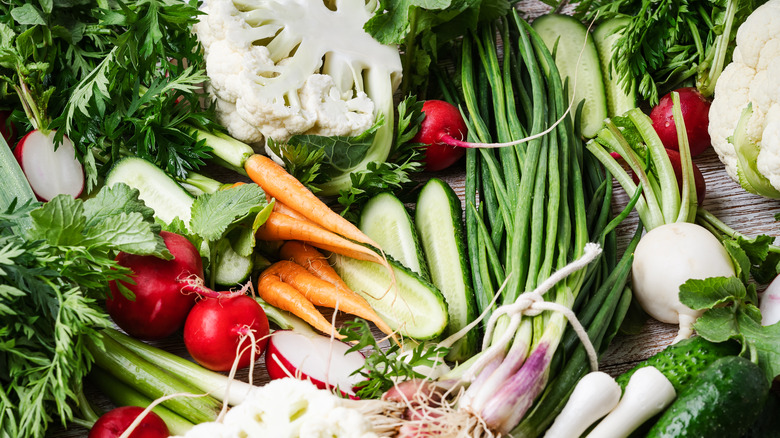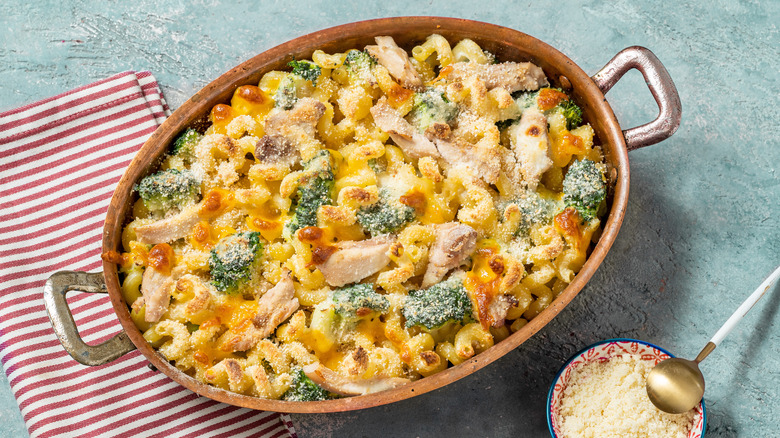Why You Should Think Twice Before Adding Raw Vegetables To Casseroles
Casseroles are our favorite go-to for potlucks, holidays, family gatherings, and even meal prep. When you need a delicious home-cooked meal that's easy to make, they can be an absolute lifesaver. That said, the best casserole recipes require some extra effort because you should cook the vegetables before adding them to the baking dish with the other ingredients. If you put raw vegetables into the casserole while they are still raw, they won't cook all the way through. The reason for that is the difference between direct and indirect cooking.
Direct cooking is when the food is in direct contact with the heat source, which makes the cooking process very quick and hot. Indirect cooking, on the other hand, is when the food is next to the heat source but not in direct contact with it. This cooking process is longer and takes place at lower temperatures. When you put raw vegetables into your casserole, they only cook indirectly. Once the casserole is done, you'll likely find some harder, partially cooked vegetable bites. Casseroles are delicious only when all ingredients are soft and fully cooked — we're not aiming for al dente here!
Cook the vegetables over direct heat first, ensuring they are thoroughly cooked. You don't want them sharing the source of heat with other ingredients as they do inside the casserole. As a matter of fact, this is a good tip to follow with all your casserole essentials, including meat and starches.
Frozen vegetables need to be thawed first
Using frozen vegetables is a great idea too, especially when you want to simplify the casserole-making process. Frozen veggies rival raw vegetables in nutrient content and they spare you the washing, peeling, and chopping. You only have to thaw them before you put them in the casserole. If you put them in while still frozen the casserole won't turn out great. Frozen vegetables release water as they thaw, which can mess up the texture of your casserole by turning it mushy. If you're in a pinch for time, speed up the defrosting process by putting the frozen veggies in a ziplock bag and running them under cold (yes, cold) water until they're defrosted. Alternatively, you can also defrost them in the microwave. Just make sure to use the vegetables immediately after speed defrosting them because letting them wait can develop pathogens.
How you cook the vegetables (raw or frozen) before adding them to your casserole matters as well. Aromatic vegetables, such as onions and garlic, release their true aroma when they're sauteed. Take a few minutes to pan-fry them in some oil before mixing them with the rest of your casserole elements. The flavor of the entire casserole will be elevated, and you'll never skip this step again. Your hard work and the extra steps will pay off. Casseroles make the best leftovers, so don't hesitate to make a larger batch.

